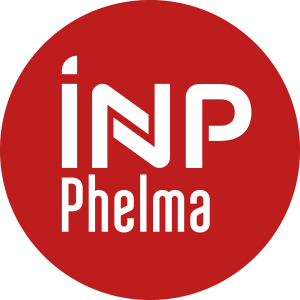Number of hours
- Lectures 16.0
- Projects 0
- Tutorials 16.0
- Internship 0
- Laboratory works 0
ECTS
ECTS 2.0
Goal(s)
Understand the main signal processing tools for digital communications.
Modeling of channel imperfections and dealing with them: OFDM, equalization, error correcting codes, MIMO techniques.
These techniques are used in mobile communication, ADSL, WIFI, ...
Content(s)
ADAPTIVE ALGORITHMS
SYNCHRONISATION
* Carrier recovery, PLL (Costas and Decision Feedback loops)
* Maximum Likelihood for phase estimation versus PLLs.
* Timing recovery.
EQUALIZATION
* Zero Forcing - Wiener filters
* Inversion with basic examples.
* Stability, Causality
* Main equalization structures: FIR equalizers, Decision Feedback Equalizers (DFE).
* Adaptive equalizers - LMS approach
Multicarriers schemes OFDM.
MIMO SYSTEMS Spatial diversity
Convolutional codes and turbo codes
* VITERBI for coding and equalization.
* TURBO CODES.
- Equalization and synchronization
- Lecture 1 - Notion of adaptive algorithm. Application examples (mean estimation, identification, equalization).
- Lecture 2 - Baseband carrier recovery - adaptive approach.
- Lecture 3 - Equalization by inverse filtering. Examples: inversion of a RIF filter with 2 coefficients, inversion of the discrete RC filter, inversion of a rational fraction.
- Lecture 4 - Equalization by Wiener filtering, LMS algorithm.
- Lecture 5 - Other structures (linear recursive, DFE, Viterbi).
- Lecture 6-7 - MIMO systems.
- Error correcting codes
- Lecture 8 - Introduction to error correcting codes. Block codes. Generator and control matrices. Syndrome decoding and the notion of complexity. Limits (information theory).
- Lecture 9 - Introduction to algebraic coding. From linear codes to algebraic codes: necessity of finite fields. Definition of operations in a 16-element field. Implementation of the calculations. Generation of pseudorandom sequences. Application to the GPS system.
- Lecture 10 - Introduction to Galois fields. General properties. Cyclic structure. Minimal polynomials. Application to symmetric encryption.
- Lecture 11 - Cyclic codes. Associated registers. Applications to real telecommunications systems: protocols with retransmission.
- Course 12 BCH codes. Peterson's algorithm. Applications to sensor networks.
- Course 13 RS codes. Berlekamp-Massey algorithm. Applications to optical fiber networks and mass media: CD, DVD.
- Course 14 - Convolutional codes. From block codes to convolutional codes. Viterbi (hard and soft). Applications to real systems: cellular mobile networks, Wifi, DVB, NASA codes.
- TD 15 - Turbo codes. Flexible decoding by erasure. Application to internet. Turbo-codes. Application to the VDSL local loop.
Prerequisites
Probability, signal processing
Session 1 :2 hours written examination
Session 2 :2 hours written examination
Course documents authorised
Calculator, tablet and computer not permitted
Session 1 :
Si cours en présentiel : examen écrit de 2 heures
Si cours à distance : contrôle continu (rapport à rendre)
Session 2 :
Examen oral (en présentiel ou par visioconférence si le distanciel est imposé)
- J.-M. BROSSIER. Signal et communication numérique. Hermès 1997.
- Gordon L. Stuber. Principles of Mobile Communication. Kluwer, 2000.



